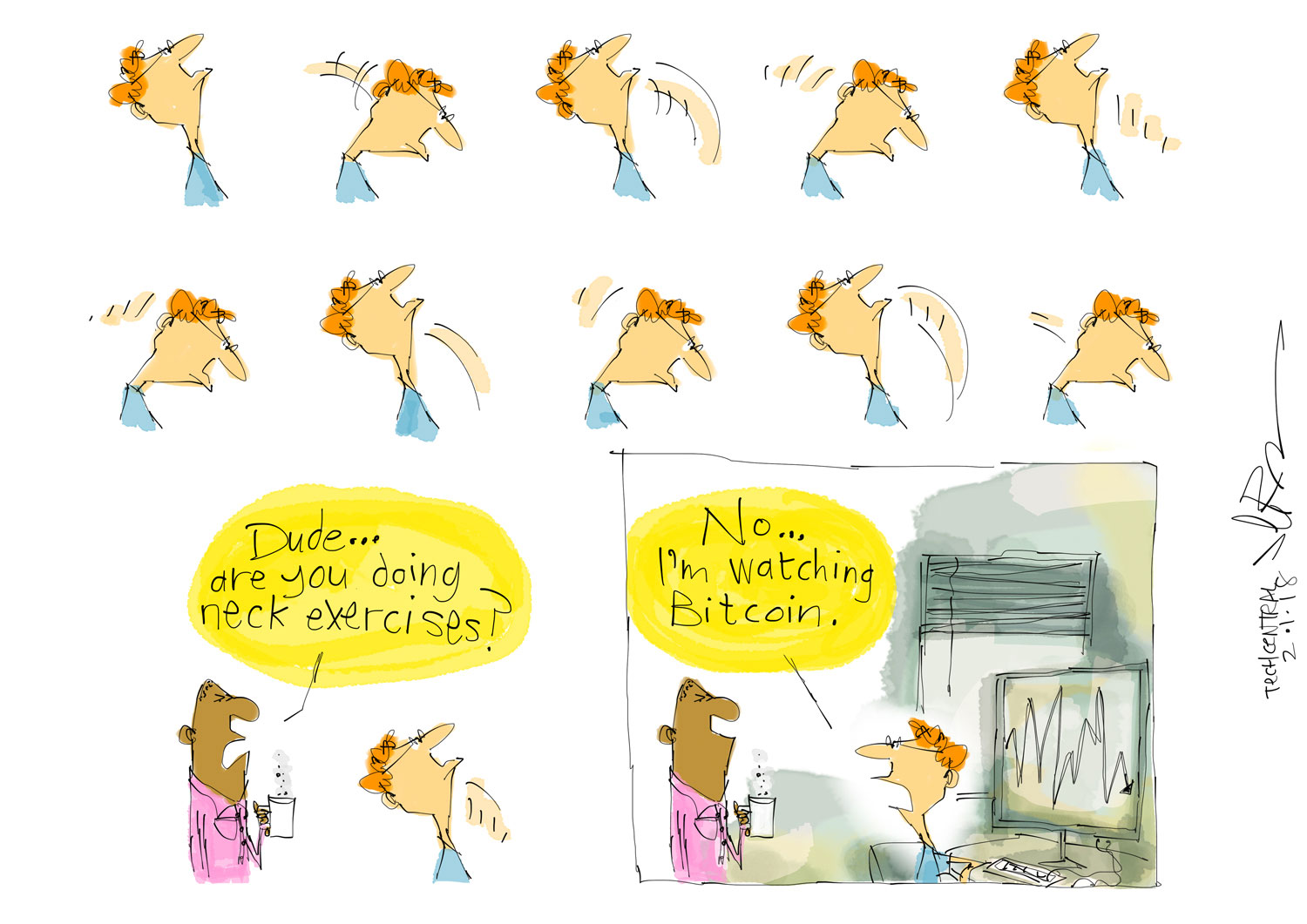
There’s a compelling reason to consider what’s going on with cryptocurrencies a purely speculative boom-and-bust roller-coaster: over a three-month period, the prices of all the top coins and tokens are rather strongly correlated, going up and down in unison. What does that make them if not the 21st-century incarnation of tulip bulbs?
It’s not so simple, though. In the last 30 days, which include a spectacular decline in the dollar price of bitcoin, the correlations haven’t been so reliable. In some cases, they appear to have broken down. That’s not an accident. Apart from relatively ignorant speculators, the cryptocurrency-trading community includes people who are genuinely interested in various applications of the blockchain technology and who are making informed bets on its particular flavours.
I calculated the correlations of the price of bitcoin with the prices of the next 10 cryptocurrencies by market capitalisation. They turned out to be the strongest, both over three months and over 30 days, in the case of three “altcoins” — Iota, litecoin and bitcoin cash.
The latter two are bitcoin “forks” — offshoots of the original currency meant roughly for the same purposes: payments and storing value. Both were meant to reduce bitcoin’s considerable friction (long processing times and high processing fees) and enable smaller, everyday transactions more efficiently.
Iota is something of a different beast: its developers bill it as intended specifically for the Internet of things, a medium for fee-free machine-to-machine payments. It’s a kind of bitcoin for robots, so essentially still a variation of the original idea.
There are two other broad categories of cryptocurrency among the biggest “altcoins”: those launched by platforms designed for “smart contracts” and initial coin offerings (ethereum, NEO, NEM, EOS), and those “minted” by projects working on blockchain-based transaction processing for the finance industry (ripple, cardano). Stellar, the nonprofit project whose cryptocurrency is called the lumen, falls into both these categories.
Over the last 30 days, the currencies launched by ethereum competitors have showed the strongest price correlations with ether, ethereum’s currency. And they haven’t been moving in unison with bitcoin.
The cryptocurrency market is younger than the rapidly evolving technology itself, and the high volatility has lured a lot of oblivious gamblers. They have whipped up clouds of froth. It makes sense, however, to look beyond that.
Future of money?
One can be sceptical that crypto — decentralised or harnessed by central banks — is the future of money. In that case, it makes sense to stay away from bitcoin, litecoin and bitcoin cash. But that doesn’t rule out believing in other applications of the technology. For example, if one holds that initial coin offerings are a sound way to attract investment and that the blockchain is good for registering property rights and storing contracts, then ethereum and its competitors are worth watching and perhaps backing. Deciding which ones depends on whose technology or market one likes best: there are different arguments, for example, in favour of Chinese-based NEO and for EOS, with its focus on fast processing.
For a believer in the blockchain as the ultimate replacement for the current money transfer infrastructure such as the Swift system, ripple’s and cardano’s digital currencies make sense. But these investments may be particularly risky, since it’s not quite clear whether the currencies will ever gain broad acceptance as part of their creators’ increasingly popular money-moving solutions.
After a while, any market craze gets boring and discerning investors replace speculators. It happened to dot-coms in the early 2000s, and it’s starting to happen to cryptocurrencies in 2018. Eventually, some blockchain applications will turn out to be hot, others not — and some investors who buy and hold, as opposed to speculators, will make money as a satisfying result of smart bets. — (c) 2018 Bloomberg LP




